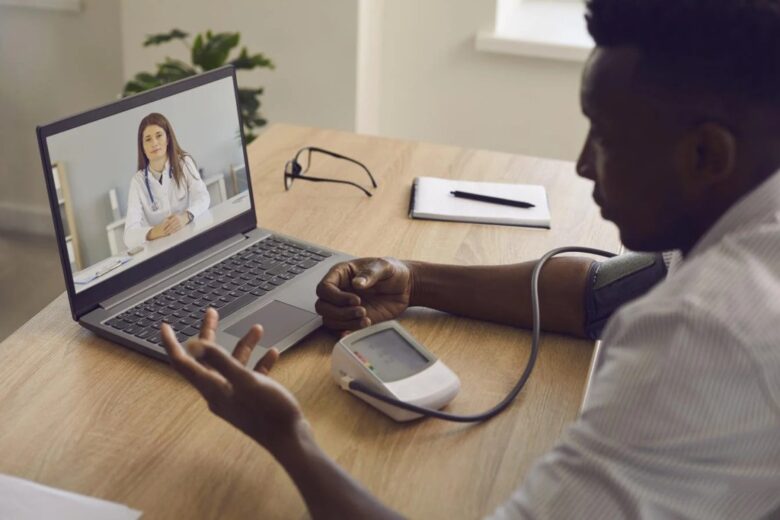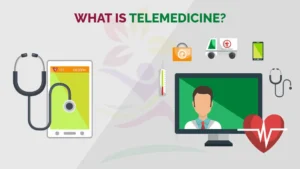RPM systems allow staff to monitor data from remote devices and escalate issues for a doctor’s attention. This reduces the need for clinic visits, hospitalizations, and long-term care. Robust solutions enable patients to track their symptoms, vitals, and recovery progress with a customized dashboard that also includes reminders and personalized, just-in-time education.
1. Real-Time Data
The effectiveness of healthcare relies on the exchange of information between medical staff and patients. Regular and consistent communication helps diagnose health conditions, deliver treatments, and monitor patient progress. Digital remote monitoring technology transmits a patient’s at-home data directly to their healthcare provider. This allows providers to regularly monitor their patients’ health and notify them if a reading goes outside of a normal range.
Continuous monitoring helps healthcare professionals identify deterioration sooner and prevent hospital readmissions or emergency room visits. It also reduces costs associated with home health services, skilled nursing facilities, and long-term care. Real-time data means that information is available almost immediately after it is generated. This immediate accessibility offers powerful insights that can inform decisions and enhance customer experiences.
2. Accessible Technology
For remote patient monitoring solutions to be effective, they must offer accessible technology. This includes cellular RPM devices that are simple to use and comfortable to wear. Patient-friendly interfaces that allow patients to track their health information and receive personalized, just-in-time education promote patient engagement and encourage adherence to care pathways.
Additionally, continuous monitoring of a patient’s status by RPM allows for rapid decision-making. This reduces potentially avoidable phone calls and ED visits. It also decreases clinic time by allowing providers to monitor trends and intervene promptly. Using pulse oximetry, for example, can alert a healthcare practitioner when a patient’s oxygen levels drop, suggesting that their current treatment may not be working.
3. Reduced Physical Visits
RPM provides patients with the tools to track their health in a familiar environment without needing to travel for clinic visits. This can help them take a proactive role in managing their health, and it can also help reduce hospital readmissions, as highlighted by one study.
However, patients need reliable internet connections to send data from their devices in a timely manner. Without it, they may experience delays in obtaining the care they need. This problem is especially critical for socioeconomically disadvantaged communities, who face barriers to accessing RPM services. These include costs of transportation and childcare, as well as difficulties scheduling or taking time off work to visit their healthcare providers.
4. Personalized Care
Effective diagnostics and treatment rely on regular, accurate information about patients. Rather than relying on intermittent clinic visits or emergency hospital trips, telemonitoring allows physicians to continuously monitor their patients’ health metrics and intervene when needed.
Continuous monitoring also helps identify deterioration more quickly and provide prompt care. This can reduce unnecessary clinic visits, prevent expensive emergencies, and improve patient outcomes.
However, RPM must be implemented with patients’ privacy in mind. Security measures need to be in place that prevent unauthorized access to personal medical records or malicious attacks on healthcare systems. This means strict encryption standards and a high priority on privacy compliance.
5. Convenience
When it comes to remote patient monitoring, convenience is a key consideration for many health care practitioners. Many believe that telemonitoring can help provide personalized care and improve outcomes.
RPM technologies enable healthcare professionals to monitor their patients’ data remotely, so they can catch any changes in the earliest stages. For example, a pulse oximeter can alert an oncologist if the oxygen levels of their cancer patient drop and allow them to take action before the situation escalates.
To be most effective, RPM devices should be user-friendly and seamlessly connect with healthcare systems. It is also important to ensure that the technology aligns with long-term EHR strategy and can be integrated into existing systems.
6. Better Patient Experience
Patients need to be able to easily understand their data and communicate it with their providers. Robust remote monitoring solutions use user-friendly cellular devices that are easy to connect and interact with.
This allows for quicker decision-making and better healthcare outcomes. It also helps prevent the unnecessary progression of a disease, reducing costs associated with hospital visits and long-term care. It also improves the overall patient experience by providing a sense of control and reassurance that they are getting the best possible care.
7. Better Health Outcomes
Providing patients with access to high-value remote monitoring can lead to better outcomes. It can prompt them to take a proactive role in their own health. It can also allow providers to monitor patient data and detect changes quickly so they can respond.
This feature is especially helpful for patients with chronic conditions such as diabetes, heart disease, and hypertension. It can also help with medication titration. However, it is important that providers carefully target these services to those who need them most. This means eliminating geographic adjustments that penalize rural providers and implementing risk-based models that align reimbursement with outcomes.
8. More Engaged Patient
When patients feel engaged with their healthcare team, it leads to better outcomes. When a comprehensive remote monitoring platform like Digital Care Journeys acts as a virtual care companion for a patient across the entire health continuum, healthcare practitioners are able to monitor a patient and address any concerns with a phone call rather than an ED visit or hospital admission.
Often, these platforms also feature user-friendly apps for smartphones and tablets, providing patients with access to their data as soon as they want it. This helps cut through the vast amount of data “noise” and makes it easier for healthcare providers to detect patterns that might indicate a health emergency.
9. Better Workflow
For a care team overwhelmed by staff shortages, a robust remote patient monitoring system can help alleviate the load. With the right solution, patients can report back to their providers and address any issues promptly—potentially reducing hospital readmissions or ED visits and preventing minor problems from escalating into major health emergencies.
For example, Cadence connects electronic health records (EHR) with clinical help (Cadence’s own registered nurses or advanced practice registered nurses change medications as needed) and keeps track of time The solution also supports remote titration trials for drugs like those for schizophrenia and hepatitis C and helps sponsors accelerate drug development.




